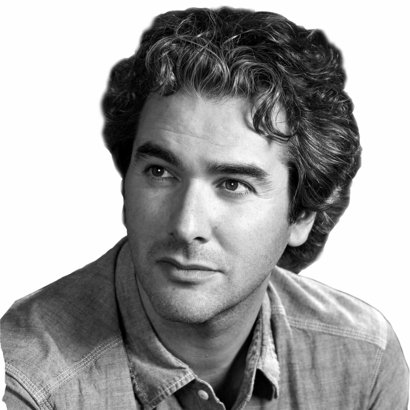In Britain, where the humble egg is a staple of breakfast, lunch, and dinner, one has risen above its ovoid brethren to rule the roost: the Cacklebean egg. The egg of choice for the dining cognoscenti, it can be found in Michelin-starred restaurants, Fortnum & Mason luxury hampers, and the Harrods Food Halls. The reason is all in the egg.
The extraordinary color of its lava-orange yolk pops off the plate like a neon sign. It is hard to overstate how dazzling one of these eggs looks lolling on a slice of sourdough or nestling up to a sausage. Then there is the oozing, unctuous texture. A Cacklebean egg coats the mouth in a rich silken veil of umami, sending you off to one of those delectable mind places that people generally reach through bubbles or powder. How can a cheap and cheerful egg be so transcendent?

Cacklebean eggs were born in 2013, the creation of Paddy and Steph Bourn. The pair had met while working at Barrington Park Estate, an organic-farming manor in the Cotswolds, where Paddy was a farmworker and Steph was a nanny. Paddy had a vision for creating his own poultry business with the “best-cared-for eggs,” and soon the pair had bought their first poultry shed and then their own field, where they lived on-site in a small caravan.
A Box of Jewels
Most egg farmers buy their chickens, but from the start the Bourns grew and raised their own, and they kept small flocks to maintain the welfare of the birds. The chickens were a mixture of old-fashioned breeds. “They lay a lot slower than most chickens do,” says Paddy in his thick Gloucestershire accent, “but the slower they go the more flavors they get into the egg.” Similarly, Cacklebean hens are kept laying for a lot longer than on other egg farms, up to four years, even though egg production decreases as they age. Quality of egg, and life, has always trumped quantity.
The chickens roost in 10 large sheds that are opened during the day to let the birds forage across the rolling green fields. Each shed holds about 1,000 hens, a tiny amount compared with commercial sheds, which can contain up to 30,000. Cacklebean’s sheds are thus small enough to be moved around the farm on a regular basis, to rest the ground and keep disease away.

The hens are fed a cereal feed that Paddy spent years perfecting to ensure the health of his chickens. It just so happened that it also made the eggs taste amazing. The feed’s exact components are a closely kept secret. “It’s a bit like the recipe for Coca-Cola,” laughs Paddy, although he’s quick to clarify that it’s all natural. Once the eggs are collected, they’re placed in an air-conditioned room and then boxed and shipped off around the country. The farm produces around 4,000 eggs a day.
The Bourns trace their success to giving free eggs to a chef at the nearby Kingham Plough, one of the region’s finest gastro pubs. When the chef moved to a Michelin-starred restaurant, word of the eggs spread, a food distributor got involved, and soon Cacklebean was the talk of restaurant kitchens across England.
What didn’t hurt was that Paddy and Steph, unusually for poultry farmers, had an eye for design. Natasha Willmore, the creative director of the local design firm Culpepper & Co., remembered the couple arriving on her doorstep in Stow-on-the-Wold, pushing a baby carriage. They wanted a box for their eggs that was as unique as the eggs themselves.

“They brought an illustrated copy of Alice in Wonderland,” recalled Willmore, and a “book about Biba,” the hip British brand of the 1960s and 1970s. Paddy said that his father had once brought home a container of Biba-branded baked beans in a beautifully ornate Art Deco gold-and-black tin that belied the quotidian contents. The result was an ornate, Fabergé-style egg motif on the front of a cardboard box, which when opened revealed a mixture of eggs of different sizes and colors, like a box of jewels. You can buy them in London for around $3 for six eggs, about two to three times the price of battery-caged eggs. (The eggs are not available in the U.S.)
The success of Cacklebean has not led to thoughts of expansion. The Bourns had talked about opening a café, but they quickly shot down the idea. “There are plenty of those around,” says Paddy. If they are going to grow, it’s going to be like their eggs: slowly.
George Pendle is an Editor at Large for AIR MAIL. His book Strange Angel: The Otherworldly Life of Rocket Scientist John Whiteside Parsons became a television series for CBS All Access. He is also the author of Death: A Life and Happy Failure, among other books


